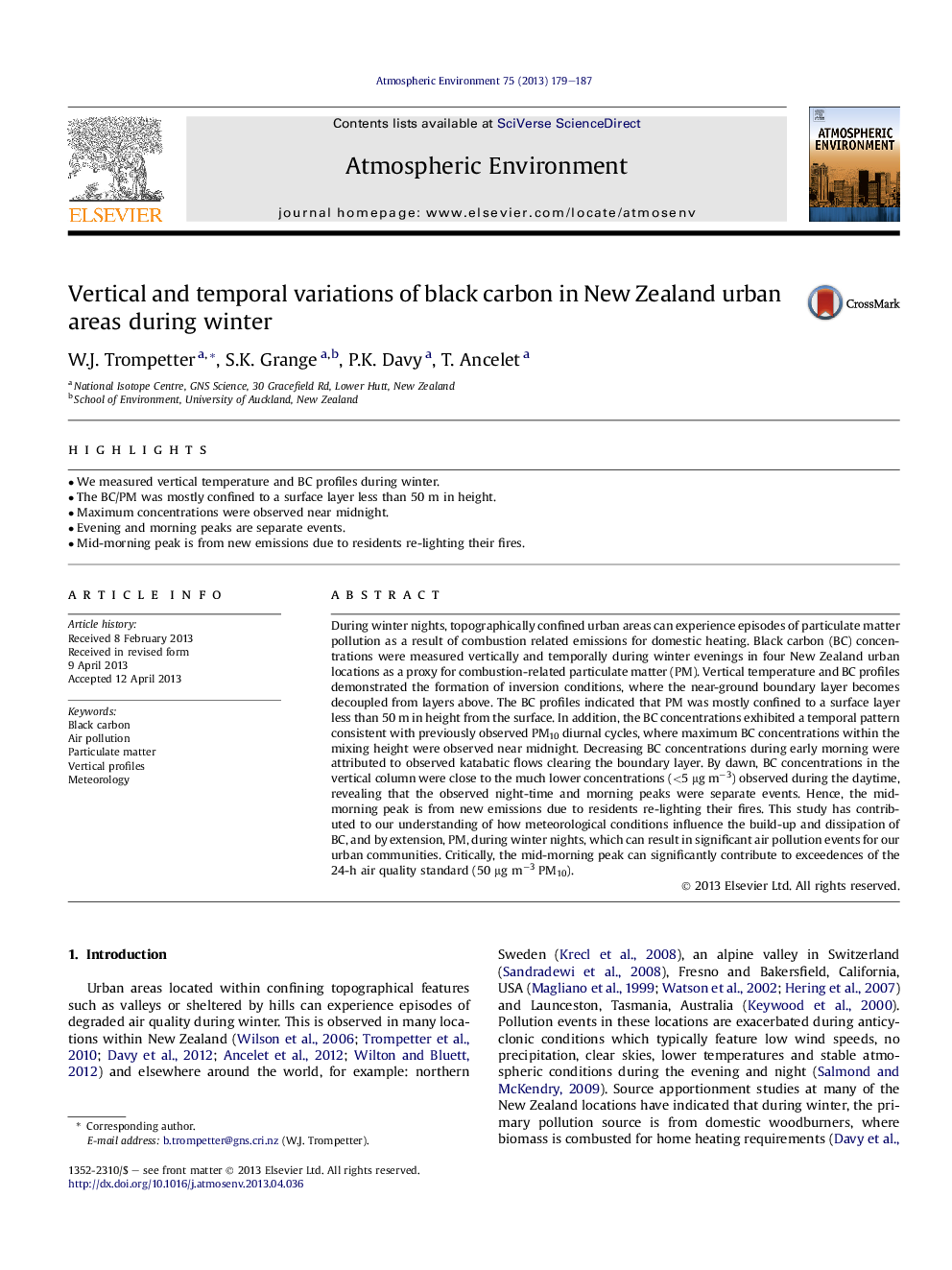| Article ID | Journal | Published Year | Pages | File Type |
|---|---|---|---|---|
| 6341868 | Atmospheric Environment | 2013 | 9 Pages |
Abstract
During winter nights, topographically confined urban areas can experience episodes of particulate matter pollution as a result of combustion related emissions for domestic heating. Black carbon (BC) concentrations were measured vertically and temporally during winter evenings in four New Zealand urban locations as a proxy for combustion-related particulate matter (PM). Vertical temperature and BC profiles demonstrated the formation of inversion conditions, where the near-ground boundary layer becomes decoupled from layers above. The BC profiles indicated that PM was mostly confined to a surface layer less than 50 m in height from the surface. In addition, the BC concentrations exhibited a temporal pattern consistent with previously observed PM10 diurnal cycles, where maximum BC concentrations within the mixing height were observed near midnight. Decreasing BC concentrations during early morning were attributed to observed katabatic flows clearing the boundary layer. By dawn, BC concentrations in the vertical column were close to the much lower concentrations (<5 μg mâ3) observed during the daytime, revealing that the observed night-time and morning peaks were separate events. Hence, the mid-morning peak is from new emissions due to residents re-lighting their fires. This study has contributed to our understanding of how meteorological conditions influence the build-up and dissipation of BC, and by extension, PM, during winter nights, which can result in significant air pollution events for our urban communities. Critically, the mid-morning peak can significantly contribute to exceedences of the 24-h air quality standard (50 μg mâ3 PM10).
Related Topics
Physical Sciences and Engineering
Earth and Planetary Sciences
Atmospheric Science
Authors
W.J. Trompetter, S.K. Grange, P.K. Davy, T. Ancelet,
